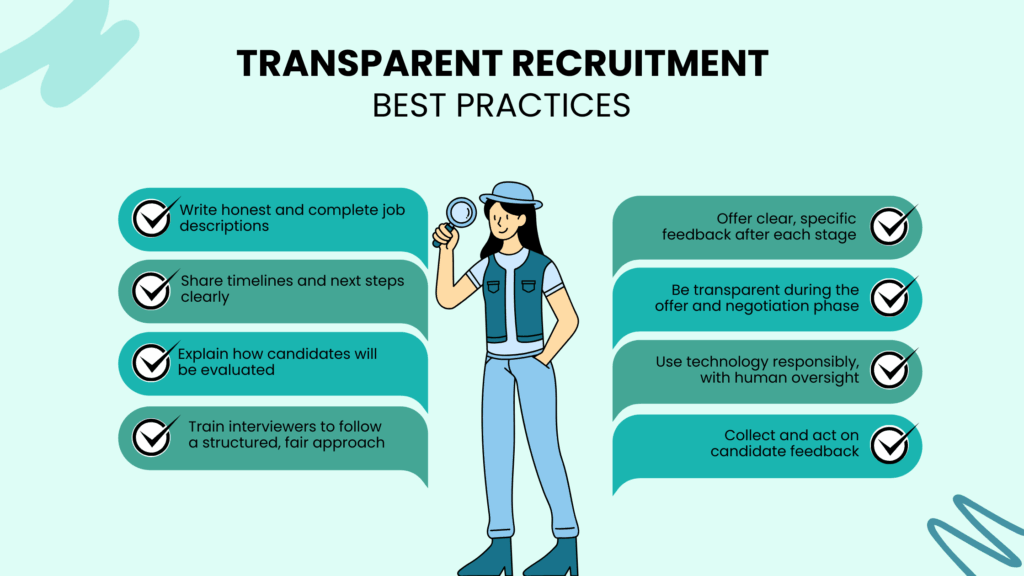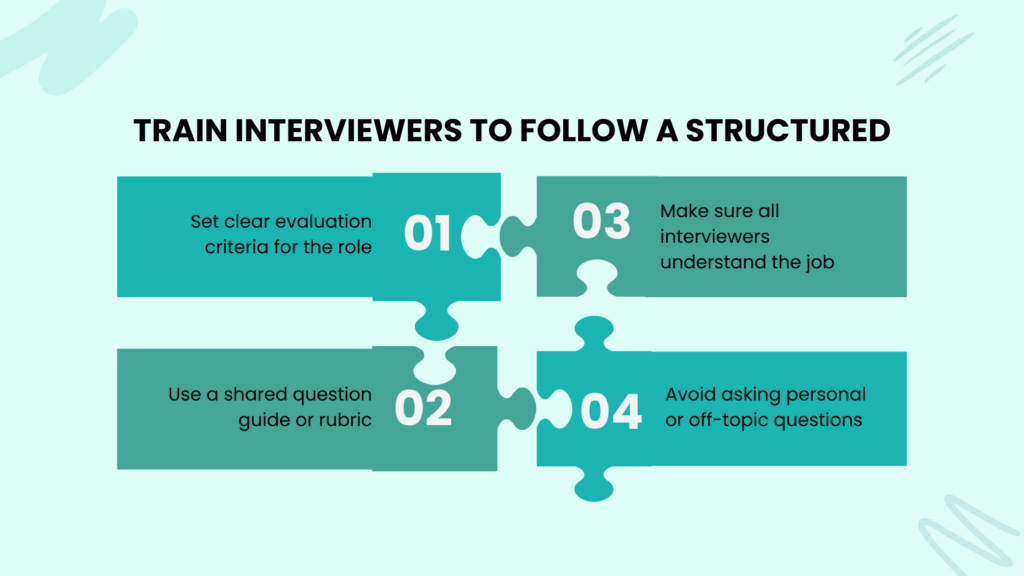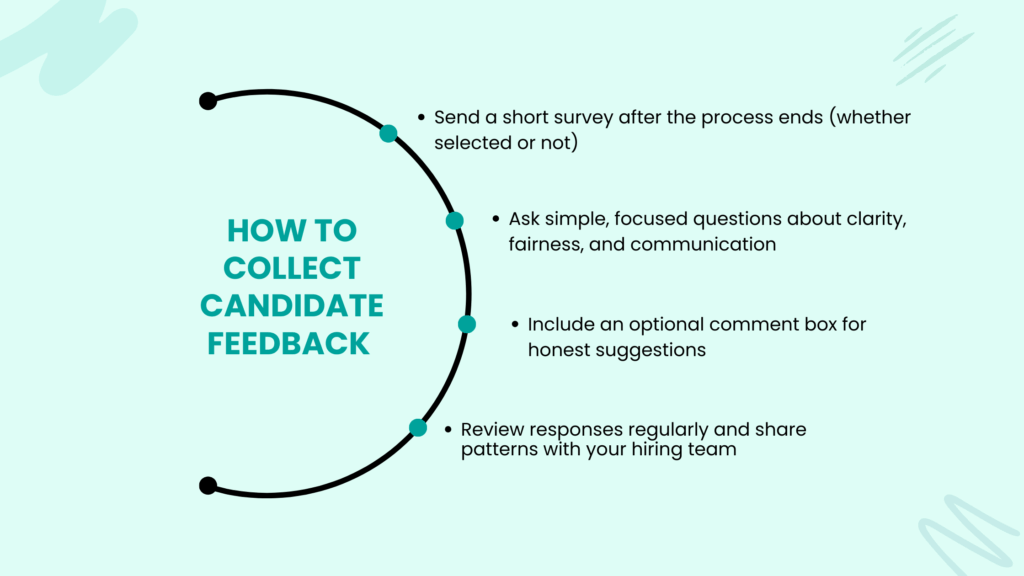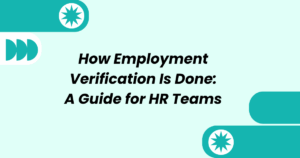Hiring should be clear, timely, and respectful, but that’s not always the reality candidates face. On platforms like Reddit and Quora, job seekers frequently share stories of being ignored after interviews, seeing job titles change midway, or never hearing back at all. One frustrated candidate wrote,
“If you just told me I didn’t make it, I’d respect you more than leaving me waiting for weeks.”
These experiences point to a deeper issue: a lack of transparency in the hiring process. A CareerPlug survey found that 66% of candidates accept offers because of a strong candidate experience, and transparency plays a big role in that. When organizations communicate openly about timelines, expectations, and outcomes, they build trust, enhance employer reputation, and attract stronger talent.
In this blog, we’ve put together some simple, proven ways to make your hiring process more transparent. Let’s get started.
Table of Contents
Best Practices for a Transparent Recruitment Process
Transparency is a series of small, consistent actions taken throughout the hiring process. These actions build trust, reduce confusion, and help both candidates and recruiters make better decisions.

Below is a list of steps to build a transparent hiring process. Each of these reflects real concerns shared by job seekers on platforms like Reddit, Quora, and LinkedIn.
- Write honest and complete job descriptions
- Share timelines and next steps clearly
- Explain how candidates will be evaluated
- Train interviewers to follow a structured, fair approach
- Offer clear, specific feedback after each stage
- Be transparent during the offer and negotiation phase
- Use technology responsibly, with human oversight
- Collect and act on candidate feedback
Let’s walk through each of these with practical tips you can apply in your own hiring process.
1. Write Honest and Complete Job Descriptions
A job description is the first real interaction a candidate has with your company. If it’s vague, incomplete, or misleading, you set the wrong expectations before the process even begins. On Quora, job seekers often complain about job ads that don’t match the actual role. One user shared,
“I’ve skipped applying for jobs just because the post didn’t include salary or mentioned vague things like ‘competitive compensation.’ That tells me they’re hiding something.”
– [Quora user, 2024 thread on job hunting frustrations]
A transparent job description should include:
- A clear and accurate job title
- A simple summary of the role
- Day-to-day responsibilities in bullet points
- Required skills and experience
- Salary range (or at least a range band)
- Work location (remote/hybrid/in-office)
- Who the person will report to
- Any deal-breakers (e.g. weekend shifts, travel requirements)
If you’re unsure how detailed to go, write your description as if you’re explaining the job to someone new in the field. Simple, specific, and honest works better than polished but empty language.
2. Share Timelines and Next Steps Clearly
Imagine applying for a role you’re excited about. The company responds on time and schedules your first interview. The interview goes well, and you feel hopeful. But after that, no one follows up. That’s the most common frustration shared by job seekers.
So, instead of letting candidates guess, map the process clearly. At the beginning of the application or in the first email, lay out a simple outline about interview rounds, dates for each stage and the person contacting the candidate.
You don’t need a PDF guide or corporate flowchart. A short paragraph in an email does the job. Something like:
“Thanks for applying. If selected, we’ll reach out by [date]. Our process usually includes two interviews: a phone screening and a final panel discussion. We aim to wrap up the process in 2–3 weeks.”
Being open about timelines doesn’t mean you must stick to them perfectly. If plans shift, just inform the candidate. A quick update like “We’re running slightly behind—we’ll get back to you by [new date]” is enough to keep things professional.
3. Explain Evaluation Criteria to Candidates
On Reddit, a candidate shared how they completed all the steps but still received vague rejections like, “We’ve decided to move forward with another candidate.” These responses don’t help them grow or understand what went wrong.
To build trust, tell candidates what matters. Share what skills you will assess. For example, let them know if you will focus on problem-solving, communication, or technical knowledge. Tell them if they will complete a task, write a short response, or give a presentation.
You don’t need to provide every detail. But even a short message like “The final round will include a case-based discussion and a short presentation” shows respect. It tells the candidate that you value preparation and fairness, not surprise and pressure.
4. Train Interviewers to Follow a Structured, Fair Approach
Even when the hiring process looks clear on paper, a poor interview experience can break trust. If each interviewer uses different questions or vague scoring, candidates start to question the fairness of the process.
According to a Harvard Business Review article, structured interviews can improve hiring accuracy by up to 50%. Consistency also makes candidates feel respected, even if they don’t get the job.

To keep interviews fair and consistent, follow these guidelines:
- Set clear evaluation criteria for the role
- Use a shared question guide or rubric
- Make sure all interviewers understand the job
- Avoid asking personal or off-topic questions
5. Offer Clear, Specific Feedback After Each Stage
According to a Talent Board report, candidates who receive feedback are four times more likely to apply again in the future.
Even a short response can make a difference. Share one or two things the candidate did well and one area where they fell short. Keep it specific and respectful. For example, instead of saying, “You weren’t the right fit,” say, “You communicated clearly and had relevant experience, but we were looking for deeper technical knowledge in this area.”
Many recruiters on LinkedIn recommend using brief templates to make the process more efficient. You don’t need to write long emails, just be honest and constructive.
6. Be Transparent During the Offer and Negotiation Phase
Job seekers on Quora and Reddit frequently mention how some companies reveal key information only after the offer is sent. One candidate shared that a job listed as remote turned out to require three days in the office, which wasn’t mentioned during the interviews.
To avoid misunderstandings, be direct about compensation, benefits, working hours, reporting structure, and any probation period. If bonuses are performance-based or benefits start after a waiting period, explain that upfront. This kind of openness builds trust and improves offer acceptance rates.
One recruiter on LinkedIn shared that their company includes a summary of offer terms in a live call before sending the formal letter. This gives the candidate space to ask questions and reduces confusion later.
7. Use Technology Responsibly, with Human Oversight
One job seeker on Reddit wrote, “I spent hours tailoring my resume, and I got an automated rejection two minutes after applying. Did anyone even look at it?”
These doubts come from a lack of explanation. If your process includes automation, mention it. Let applicants know what’s reviewed by software and what’s handled by people.
If you’re using video assessments or AI scoring, provide context. For example, explain that recorded responses are reviewed by hiring staff or that scoring is only one part of the final decision.
Technology should support hiring, not replace human judgment. When candidates know the process includes both, they’re more likely to stay engaged and respect the outcome.
8. Collect and Act on Candidate Feedback
Most companies ask for customer feedback—but forget to do the same for job candidates. Without it, you don’t know what parts of your hiring process need improvement.

Asking for feedback shows candidates that you care about fairness and improvement.
How to collect candidate feedback effectively:
- Send a short survey after the process ends (whether selected or not)
- Ask simple, focused questions about clarity, fairness, and communication
- Include an optional comment box for honest suggestions
- Review responses regularly and share patterns with your hiring team
Candidates appreciate being heard—even after rejection. It’s a small effort that builds long-term credibility and helps you fix weak spots before they harm your employer brand.
9. Promote Verified Hiring Through Employment Validation
Verified hiring means you’ve done your part to ensure that each employee’s work history is real, consistent, and properly documented.
For candidates, this creates trust in your workplace standards. For your team, it builds confidence that hiring is based on facts, not assumptions or inflated claims.
One way to promote this level of transparency is to use trusted tools like Worksure that confirm employment records. Verified hiring reinforces your commitment to a fair and transparent workplace—from the first application to the final onboarding step.
Final Thoughts
A transparent recruitment process depends on clear communication, respectful behavior, and small consistent actions. Each step of the hiring process shapes your company reputation.
Candidates expect perfection and fairness. When you mention clear job descriptions, interview timelines and response timely, candidates feel respected, even if they are not selected.
By following the practices in this blog, you can reduce confusion, improve engagement, and strengthen your brand reputation.
Related Articles:
- What Is Employer Branding, and Why It Matters More Than Ever
- Effective Employee Retention Strategies for Long-Term Success
Frequently Asked Questions (FAQs)
What is the best practice for recruitment?
The best recruitment practice is to maintain a clear, structured, and fair process. This includes accurate job descriptions, transparent communication, consistent evaluation criteria, and timely feedback.
What are the 7 steps of the recruitment process?
The seven steps of recruitment process are:
- Identify hiring need
- Create job description
- Source candidates
- Screen applications
- Conduct interviews
- Make the offer
- Onboard the new hire
How do you ensure fairness and transparency during the selection process?
Use structured interviews, define clear evaluation criteria, train interviewers, share timelines, and communicate with all candidates. Transparency builds trust and reduces bias.
What is the best practice for internal recruitment?
The best practice is to clearly announce internal opportunities, apply the same evaluation criteria as external hires, and give feedback to all internal applicants. This promotes fairness and boosts morale.
What are the sources of recruitment and how can we best hire through utilizing them?
Common sources of recruitment include job boards, employee referrals, company career pages, recruitment agencies, and social media. To hire effectively, choose the right source based on the role, use clear job descriptions, and track which sources bring the most qualified applicants.
What is a transparent recruitment process analysis?
A transparent recruitment process analysis reviews how open, fair, and consistent your hiring practices are. It evaluates job descriptions, interview structure, communication patterns, and candidate feedback to identify gaps and improve trust, efficiency, and candidate experience across all stages of hiring.





